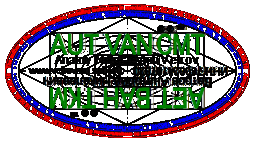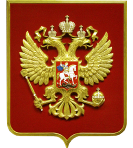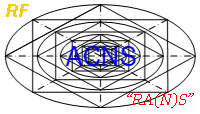|
№
|
The name of unit
|
p.
|
|
|
The normative references
|
7
|
|
|
The list of definitions
|
8
|
|
|
The list of reductions and symbols
|
11
|
|
|
The introduction
|
12
|
|
1.
|
The analysis of the condition of problem and the statement of research tasks
|
18
|
|
1.1.
|
The expediency of development of the technologies of the financial analysis
|
19
|
|
1.2.
|
The specificity of the offered approach and the statement of the complex of research tasks
|
20
|
|
1.3.
|
The stages of the carrying out of research in technics and economics
|
21
|
|
1.4.
|
The conclusions of the first chapter
|
45
|
|
2.
|
The genesis and theoretical bases of the cognitive modeling technology
in the system analysis, informatics, psychology and economics
|
46
|
|
2.1.
|
The occurrence of the cognitive approach, the basis of the system and financial analysis
of the difficult objects of research
|
47
|
|
2.1.1.
|
The system approach in technics and economics
|
48
|
|
2.1.2.
|
The information approach in technics and economics
|
49
|
|
2.1.3.
|
The cognitive approach in the information-educational environment
|
50
|
|
2.1.4.
|
The cognitive approach in (cognitive) psychology
|
51
|
|
2.1.5.
|
The cognitive approach in the modern informatics
|
53
|
|
2.1.6.
|
The cognitive approach in the modern economics
|
56
|
|
2.2.
|
The features of the analysis of the object of research in the environment
|
58
|
|
2.2.1.
|
The classification of the (difficult) objects of research
|
60
|
|
2.2.2.
|
The basic kinds of environments at the analysis of behavior of the (difficult) objects
|
61
|
|
2.3.
|
The system of the analysis and control of the object, process or phenomena
|
62
|
|
2.4.
|
The concept of the cognitive model as the information basis
of the system and financial analysis
|
63
|
|
2.5.
|
The financial reporting-documentation as the information basis of the analysis
|
64
|
|
2.6.
|
The conclusions of the second chapter
|
65
|
|
3.
|
The international standards of the financial reporting-documentation
on the way to the unification of the forms of the financial and accounting reporting-documentation
|
67
|
|
3.1.
|
The structure and dynamics of functioning of the financial market
|
68
|
|
3.2.
|
The global purposes of standardization and harmonization of the accounting within the framework
of the problem of unification of the (consolidated) financial reporting-documentation
|
69
|
|
3.3.
|
The institutional subjects regulating
the creation, distribution and use of the international standards
|
70
|
|
3.4.
|
The principles of creation, distribution and use
of the international standards of the financial and accounting reporting-documentation
|
71
|
|
3.5.
|
The basic methods of transformation of the financial reporting-documentation
|
72
|
|
3.6.
|
The features of formation of the accounting balance
by the international standards of the financial reporting-documentation
|
73
|
|
3.7.
|
The qualifying tests of the professional participants
of the financial market of the economic system of the country
|
76
|
|
3.8.
|
The administrative-legal forms of existence of the managing subject
of the economic system
|
77
|
|
3.9.
|
The conclusions of the third chapter
|
79
|
|
4.
|
The cognitive modeling technology as the apparatus
of the financial analysis of the organizational structure
|
80
|
|
4.1.
|
The iterative cycle of the cognitive modeling technology
|
82
|
|
4.2.
|
The technique of use of the cognitive modeling technology
for the financial analysis of the organization
|
83
|
|
4.3.
|
The features of selection of the techniques and algorithms
for the realization of the analysis of the object of research
|
84
|
|
4.4.
|
The ways of representation of the structure of cognitive model
|
86
|
|
4.4.1.
|
The representation of the structure of cognitive model
by means of the oriented graph combining the theory of sets
|
87
|
|
4.4.2.
|
The representation of the structure of cognitive model
by means of the hierarchical (the multilevel) structural scheme
|
88
|
|
4.4.3.
|
The representation of the structure of cognitive model
by means of the calculation with the use of the corteges on domains
|
90
|
|
4.4.4.
|
The main volumetric representation of the structure of cognitive model
by means of the hierarchical (the multilevel) structural scheme
with a set of encapsulated pyramids
|
90
|
|
4.4.5.
|
The additional volumetric representation of the structure of cognitive model
by means of the hierarchical (the multilevel) structural scheme in the view
of the one-, two-, three-, four-, five– and n– cognitive disc, cognitive circle,
cognitive cylinder, cognitive cone, cognitive sphere and others
|
91
|
|
4.5.
|
The technique of formation of the normative-legal basis
for the financial analysis of the organization
|
93
|
|
4.6.
|
The technique of formation of the information basis of the financial analysis of the organization
|
94
|
|
4.7.
|
The technique of additional verification of the information basis
of the financial analysis of the organization
|
95
|
|
4.8.
|
The technique of creation and modification of the working plan of accounts
and the model of accounting of the organization
|
96
|
|
4.9.
|
The technique of carrying out of the financial analysis of the condition of organization
|
97
|
|
4.10.
|
The parametrical cognitive models block for the financial analysis of the organization
|
98
|
|
4.10.1.
|
The cognitive model for the carrying out of the horizontal
financial analysis of the organization
|
99
|
|
4.10.2.
|
The cognitive model for the carrying out of the vertical
financial analysis of the organization
|
100
|
|
4.10.3
|
The cognitive model for the carrying out of the trend financial analysis of the organization
|
101
|
|
4.11.
|
The technique of the research of the parameters of cognitive model
for the financial analysis of the organization
|
102
|
|
4.12.
|
The algorithm of processing of a posteriori data
of the horizontal, vertical and trend financial analysis of the organization
|
103
|
|
4.13.
|
The recommendations to use of the cognitive modeling technology
for the financial analysis of the organization
|
104
|
|
4.14.
|
The conclusions of the fourth chapter
|
105
|
|
5.
|
The features of procedure of the (micro-) financial analysis of the managing subject
|
106
|
|
5.1.
|
The features of the organizational structure
of the (non)production enterprise of the economic system
|
107
|
|
5.2.
|
The features of the organizational structure of the educational establishment
of the system of education
|
109
|
|
5.3.
|
The example of the territorially distributed organizational structure
in the basis of the information-educational environment
|
110
|
|
5.4.
|
The example of the distributed automated organizational structure
in the basis of the information-educational environment
|
111
|
|
5.5.
|
The features of the inflationary depreciation of cash flows
in the economic system of the country
|
112
|
|
5.6.
|
The features of change of the cost of cash flows
in the economic system of the country
|
113
|
|
5.7.
|
The indexes of dynamics of the financial market and tools
|
115
|
|
5.8.
|
The dynamics and communications of the managing subject in the financial system of the country
|
120
|
|
5.9.
|
The investment and innovative politics
|
121
|
|
5.10.
|
The normative-legal basis of the financial analysis
|
122
|
|
5.11.
|
The information basis of the financial analysis of the activity
of the credit and other organization
|
123
|
|
5.11.1.
|
The requirements to the financial reporting-documentation of the organizational structures
|
124
|
|
5.11.2.
|
The structure of the financial reporting-documentation of the (non)production organization
|
125
|
|
5.11.3.
|
The features of the financial reporting-documentation of the credit organization
|
126
|
|
5.11.4.
|
The structure of the financial reporting-documentation of the credit organization
|
127
|
|
5.11.5.
|
The additional elements of the accounting and financial reporting-documentation
of the credit organization
|
128
|
|
5.11.6.
|
The consumers of the financial reporting-documentation
|
129
|
|
5.11.7.
|
The elements of the financial reporting-documentation connected
with the changes of financial-economy activity
|
130
|
|
5.12.
|
The concept and structure of the simple and consolidated
accounting and financial reporting-documentation on the international standards
|
131
|
|
5.13.
|
The basic methods of the (micro-) financial analysis
of the different forms of reporting-documentation
|
133
|
|
5.13.1.
|
The structure of the accounts of the accounting and the financial analysis
|
135
|
|
5.13.2.
|
The horizontal analysis on the basis of the data of several years
|
138
|
|
5.13.3.
|
The vertical analysis of the reporting-documentation of the current year and its comparison
|
141
|
|
5.13.4.
|
The trend analysis on the basis of the system of analytical coefficients
|
144
|
|
5.14.
|
The recommended scheme of carrying out of the auditor check
|
146
|
|
5.15.
|
The scheme of carrying out of the financial analysis and audit
|
147
|
|
5.15.1.
|
The external and internal control of the activity of different organizations
|
148
|
|
5.15.2.
|
The external and internal control of the activity
of the (non)production organization (enterprise)
|
149
|
|
5.15.3.
|
The external and internal control of the activity of the credit organization
|
153
|
|
5.16.
|
The financial analysis of the credit organization
|
157
|
|
5.16.1.
|
The basic kinds of bank operations
|
159
|
|
5.17.
|
The financial analysis of the multi-nomenclature enterprise
|
160
|
|
5.18.
|
The financial analysis of the trading-purchasing organization
|
163
|
|
5.19.
|
The static financial analysis of the results
of financial-economy activity in the conditions of definiteness
|
165
|
|
5.19.1.
|
The structure of the accounting balance of the organization (enterprise)
|
166
|
|
5.19.2.
|
The structure of the accounting balance of the credit organization
|
167
|
|
5.19.3.
|
The structure of the accounting balance of “The Federal reserve system of USA”
|
168
|
|
5.19.4.
|
The analysis of stability of the credit organization and commercial bank
|
169
|
|
5.20.
|
The basic analytical coefficients of the financial analysis
|
172
|
|
5.20.1.
|
The structure of the accounting balance and the report about the profits and losses of the enterprise
for the introduction of the system of analytical coefficients
|
179
|
|
5.21.
|
The conclusions of the fifth chapter
|
198
|
|
6.
|
The specifics of research of the organizational structure
by means of the cognitive modeling technology
|
202
|
|
6.1.
|
The financial analysis of the organizational structure
|
203
|
|
6.2.
|
The economic factors of the efficiency of functioning
of the managing subject in the financial system
|
204
|
|
6.2.1.
|
The formation and calculation of the items and aggregates of the accounting balance
of the (non)production organization
|
206
|
|
6.2.2.
|
The formation of the aggregates of the accounting balance of the credit organization
|
210
|
|
6.3.
|
The cognitive model for the static analysis of the financial condition
in the conditions of definiteness
|
211
|
|
6.4.
|
The organization and plan of carrying out of the experiment at the research
of parameters of the cognitive models for the financial analysis
|
234
|
|
6.4.1.
|
The information basis of the accounting and the financial analysis
|
236
|
|
6.4.2.
|
The calculation of parameters of the cognitive model for the horizontal
financial analysis of the enterprise and (credit) organization
|
237
|
|
6.4.3.
|
The calculation of parameters of the cognitive model for the vertical
financial analysis of the enterprise and (credit) organization
|
276
|
|
6.4.4.
|
The calculation of parameters of the cognitive model for the trend
financial analysis of the enterprise and (credit) organization
|
319
|
|
6.5.
|
The complex of programs for the automation of the (micro-)
financial analysis and audit of the organizational structure
|
334
|
|
6.5.1.
|
The features and requirements to the software
for the automation of the financial analysis
of the results of financial-economy activity of the organization
|
335
|
|
6.5.2.
|
The architecture of the complex of programs for the automation
of the financial analysis and audit of the managing subject
|
336
|
|
6.6.
|
The conclusions of the sixth chapter
|
337
|
|
|
The conclusion
|
340
|
|
|
The bibliographic apparatus
|
342
|
|
№
|
The name of unit
|
p.
|
|
1.
|
The financial analysis, accounting and audit of the organizational structures
|
1
(download)
|
|
1.1.
|
The financial (accounting) reporting-documentation
|
2
(download)
|
|
1.2.
|
The concept and main requirements to the financial (accounting) reporting-documentation
|
3
(download)
|
|
1.3.
|
The normative-legal basis of bank management
and accounting (the legislative basis)
|
4
(download)
|
|
1.4.
|
The main forms of accounting (registers) in the (commercial) bank
|
5
(download)
|
|
1.5.
|
The bases of audit and internal control in the (commercial) bank
|
6
(download)
|
|
1.6.
|
The structure of the bank auditor activity and analytical work
|
7
(download)
|
|
1.7.
|
The general scheme of carrying out of the audit inspection
|
8
(download)
|
|
1.8.
|
The information basis, the normative basis and the structure of reporting-documentation
for the support of analysis and planning
|
9
(download)
|
|
1.9.
|
The bases of accounting in the credit organization
and the kinds of organizational structures
|
10
(download)
|
|
1.10.
|
The main bank operations and the tasks of accounting
|
11
(download)
|
|
1.11.
|
The features of structure and the kinds of accounts of the accounting:
the active and passive account
|
12
(download)
|
|
1.12.
|
The features of the structure of account of the accounting:
the generalization and grouping of information on the active and passive account,
the scheme of formation of the information code of account
|
13
(download)
|
|
1.13.
|
The examples of the scheme of formation of the information code of personal account
|
14
(download)
|
|
1.14.
|
The main types of economy operations and their influence on the balance:
the increase on the debit of one active account
and the reduction on the credit of other active account
or the reduction on the debit of one passive account
and the increase on the credit of other passive account
|
15
(download)
|
|
1.15.
|
The main types of economy operations and their influence on the balance:
the increase on the debit of one active account
and the increase on the credit of other passive account
or the reduction on the debit of one passive account
and the reduction on the credit of other passive account
|
16
(download)
|
|
1.16.
|
The features of the plan of accounts of the accounting:
the balance accounts, the accounts of trust management,
the urgent accounts, the DEPO accounts and the additional accounts
|
17
(download)
|
|
1.17.
|
The features of the plan of accounts of the accounting:
the use of uniform accounts in the synthetic and analytical accounting
and the division of accounts on the types of clients
|
18
(download)
|
|
1.18.
|
The principles of the organization of finance, management
and the structure of the accounting balance of the enterprise
|
19
(download)
|
|
1.19.
|
The structure of the accounting balance of the (commercial) bank
|
20
(download)
|
|
1.20.
|
The structure of the accounting balance
and the features of the mechanism of reservation of the (commercial) bank
|
21
(download)
|
|
1.21.
|
The structure of the accounting balance and the monetary mass of FRS
|
22
(download)
|
|
1.22.
|
The analysis of the report about profits and losses: the scheme of analysis
|
23
(download)
|
|
1.23.
|
The structure of the plan of accounts of the accounting of the credit organization
|
24
(download)
|
|
1.24.
|
The system of analytical coefficients of the enterprise and (commercial) bank
|
25
(download)
|
|
1.24.1.
|
The initial data of the financial analysis and calculation:
the accounting balance, the report about profits and losses and the additional details
|
26
(download)
|
|
1.24.2.
|
The property status
|
27
(download)
|
|
1.24.3.
|
The liquidity and solvency
|
28
(download)
|
|
1.24.4.
|
The financial sustainability
|
29
(download)
|
|
1.24.5.
|
The business activity
|
30
(download)
|
|
1.24.6.
|
The profit and profitability
|
31
(download)
|
|
1.24.7.
|
The market activity
|
32
(download)
|
|
1.25.
|
The financial planning: budgeting
|
33
(download)
|
|
1.26.
|
The financial resources of the organizational structure
|
34
(download)
|
|
1.27.
|
The investment
|
35
(download)
|
|
1.28.
|
The inference of the formula of monetary multiplier
|
36
(download)
|
|
1.29.
|
The inference of the formula of deposit multiplier
|
37
(download)
|
|
2.
|
The bank management and deep financial analysis of the credit organization
|
38
(download)
|
|
2.1.
|
The concept of bank management
|
39
(download)
|
|
2.2.
|
The object, subject and purpose of financial management of the (commercial) bank
|
40
(download)
|
|
2.3.
|
The features of financial management and sustainability of the (commercial) bank
|
41
(download)
|
|
2.4.
|
The tasks of bank management:
policy, marketing, products, the formation of client base,
economics and finance, information-analytical support
|
42
(download)
|
|
2.5.
|
The functions of bank management:
financial management and human resource management
|
43
(download)
|
|
2.6.
|
The theory of management of the liquidity of bank
|
44
(download)
|
|
2.7.
|
The methods of control of the liquidity of bank
|
45
(download)
|
|
2.8.
|
The financial, organizational, functional,
commercial and capital sustainability of the (commercial) bank
|
46
(download)
|
|
2.9.
|
The banking product, management of financial sustainability
and the methods of the financial analysis
|
47
(download)
|
|
2.10.
|
The analysis of the financial condition of the (commercial) bank
|
48
(download)
|
|
2.11.
|
The dynamics of profit
|
49
(download)
|
|
2.12.
|
The kinds of expenses of the (commercial) bank
|
50
(download)
|
|
2.13.
|
The scheme of the analysis of the profitability of the (commercial) bank
|
51
(download)
|
|
2.13.1.
|
The deviation of the norm (rate) of profit
|
52
(download)
|
|
2.13.2.
|
The model of the capital equation of balance:
the economic return of own capital
|
53
(download)
|
|
2.13.3.
|
The factor analysis of the own capital and the multiplicator of capital
|
54
(download)
|
|
2.13.4.
|
The model of the dynamic accounting balance
|
55
(download)
|
|
2.13.5.
|
The model of the factor analysis of the profit
|
56
(download)
|
|
2.13.6.
|
The model of the modified balance equation:
the aggregates of the accounting balance
|
57
(download)
|
|
2.14.
|
The system of analytical coefficients
for the analysis of the financial-economic condition of the (commercial) bank
|
58
(download)
|
|
2.14.1.
|
The analysis of the assets
|
59
(download)
|
|
2.14.2.
|
The analysis of the liquidity
|
60
(download)
|
|
2.14.3.
|
The analysis of the liabilities
|
61
(download)
|
|
2.14.4.
|
The analysis of the efficiency of activity
|
62
(download)
|
|
2.14.5.
|
The analysis of the yield
|
63
(download)
|
|
2.14.6.
|
The analysis of the (non)percent incomes
|
64
(download)
|
|
2.15.
|
The models of financial management of the (commercial) bank
|
65
(download)
|
|
2.15.1.
|
The model of planning on the basis of the portfolio approach
|
66
(download)
|
|
2.15.2.
|
The general model of management and the management of bank liquidity
|
67
(download)
|
|
2.15.3.
|
The system of the indicators of profitability of the (commercial) bank
|
68
(download)
|
|
2.16.
|
The financial risk as the object of management
|
69
(download)
|
|
2.17.
|
The management of financial sustainability of the (commercial) bank
|
70
(download)
|
|
2.18.
|
The normatives and the management of liquidity in the (commercial) bank
|
71
(download)
|
|
3.
|
The insurance of the organizational structure
|
72
(download)
|
|
3.1.
|
The insurance as the system of financial protection: principles
|
73
(download)
|
|
3.2.
|
The insurance as the system of financial protection:
insurance fund, insurance pay, insurance support,
insurance compensation, insurance contract and insurance certificate
|
74
(download)
|
|
3.3.
|
The kinds and the deployed mechanism of insurance
|
75
(download)
|
|
3.4.
|
The kinds of insurance reserves
|
76
(download)
|
|
3.5.
|
The structure of the accounting balance of the insurance organization
|
77
(download)
|
|
3.6.
|
The financial result of activity of the insurance organization:
the structure of incomes
|
78
(download)
|
|
3.7.
|
The financial result of activity of the insurance organization:
the structure of expenses
|
79
(download)
|
|
3.8.
|
The financial result of activity of the insurance organization:
the structure of profit
|
80
(download)
|
|
3.9.
|
The kinds of risks of the insurance company and the estimation of solvency
|
81
(download)
|
|
4.
|
The tax system
|
82
(download)
|
|
4.1.
|
The signs and normative-legal basis of taxes
|
83
(download)
|
|
4.2.
|
The definitions in the sphere of taxes
|
84
(download)
|
|
4.3.
|
The classification of taxes
|
85
(download)
|
|
4.4.
|
The functions of taxes
|
86
(download)
|
|
4.5.
|
The methods of calculation and the ways of the collection of taxes (taxation)
|
87
(download)
|













